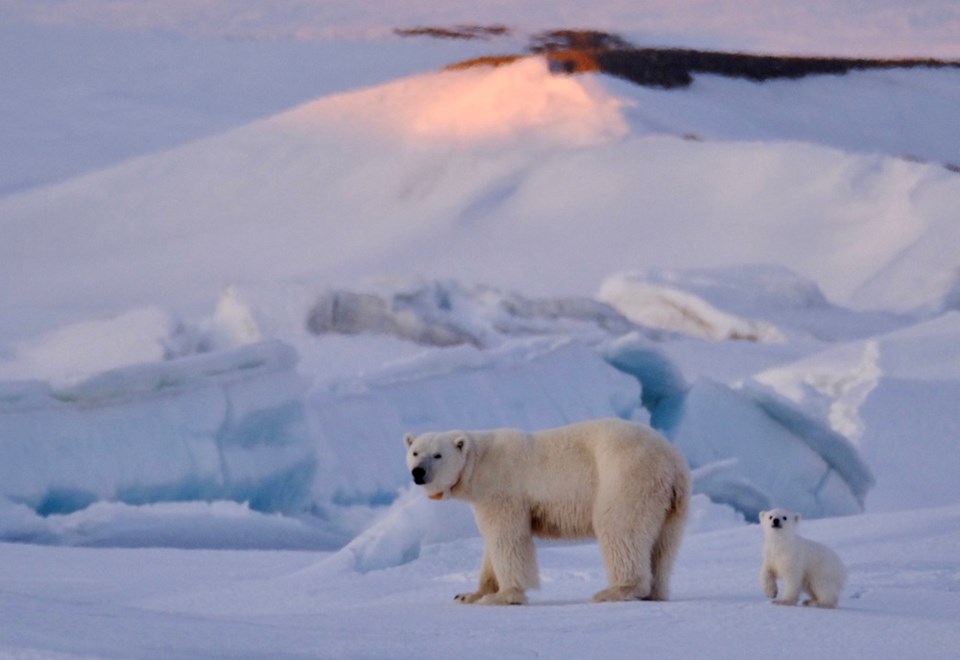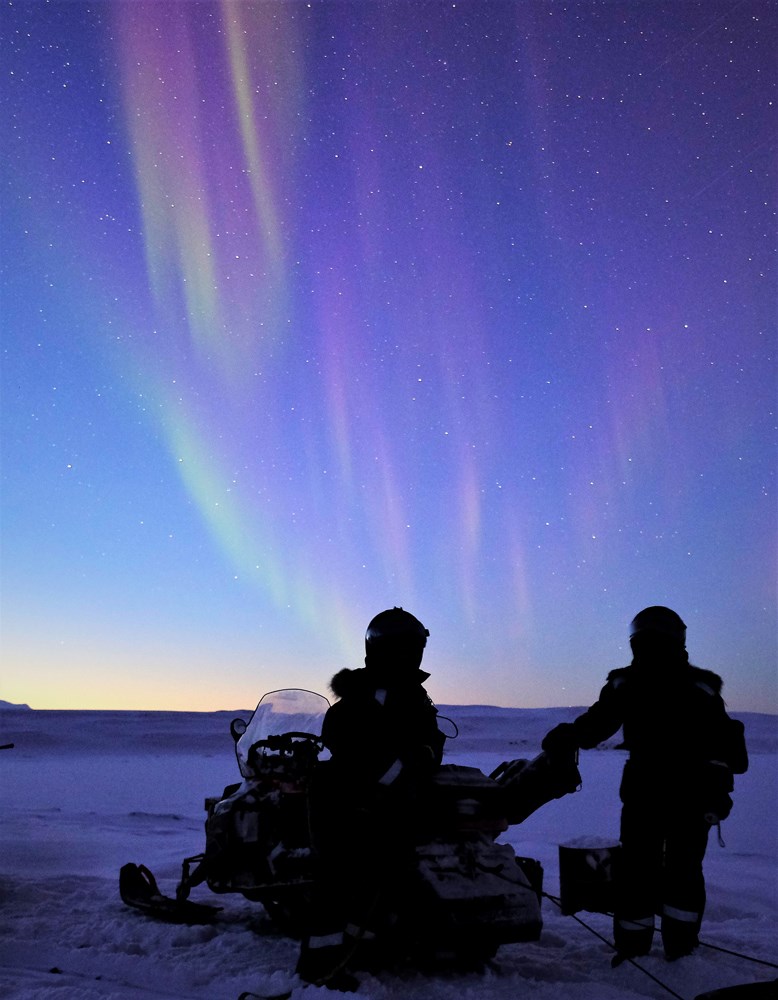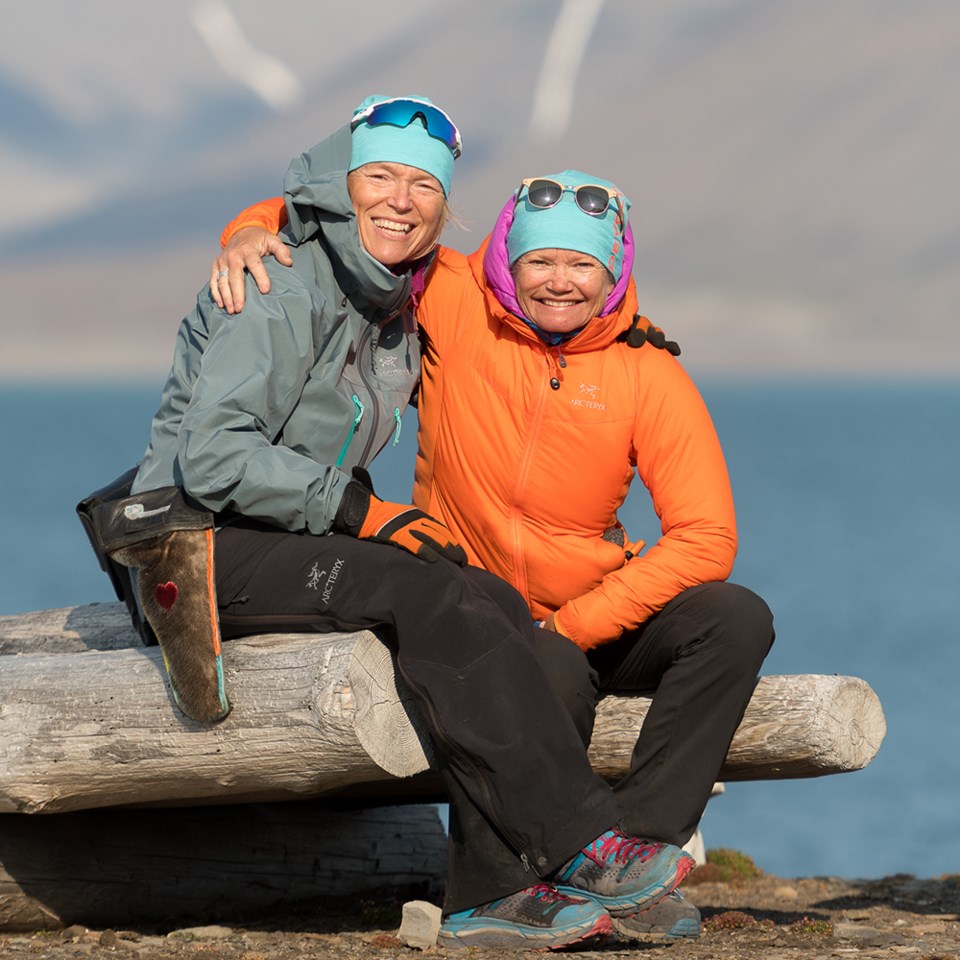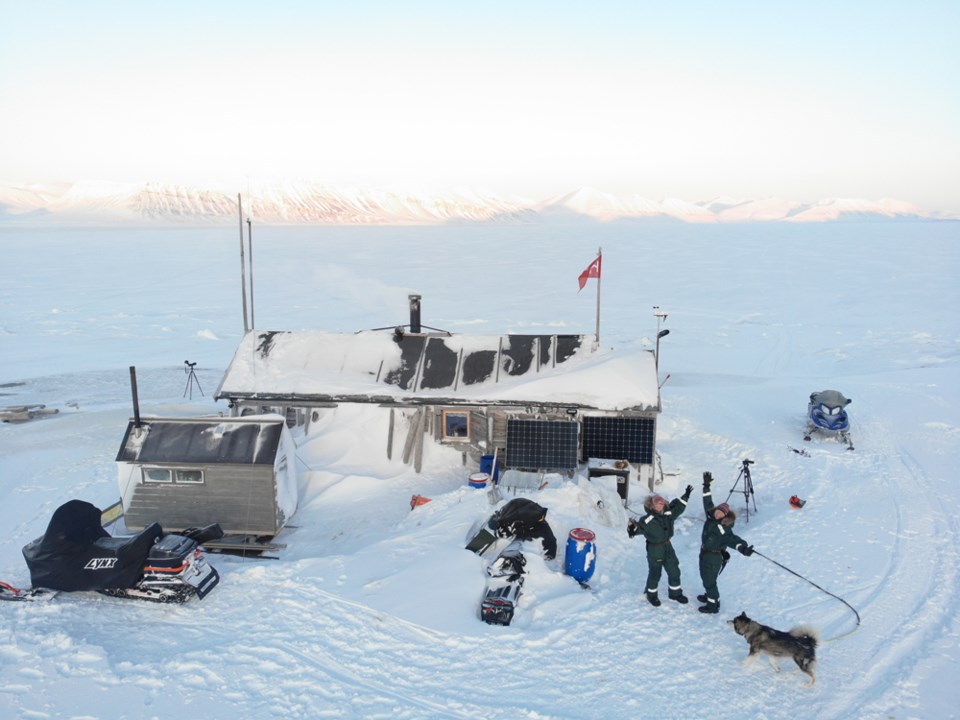After nine months in isolation, they rode their snowmobiles for six hours to the nearest town.
The ride to civilization marked a milestone for citizen scientists Sunniva Sørby and Hilde Fålun Strøm as they had officially completed the first all-female overwintering in a remote, isolated trappers' hut on the archipelago of Svalbard, which is located between mainland Norway and the North Pole.
They arrived in the town of Longyearbyen, which has a population of about 3,000, on this auspicious occasion with Ettra, their polar dog.
The first thing Sørby, who is from Squamish, wanted after so long on the northern tundra was a fresh salad "with every colour of vegetable," along with a cappuccino and some freshly baked cinnamon rolls.”
When they first arrived at the trapper's hut known as Bamsebu nine months ago for their Hearts in the Ice: Embrace the Planet Project — which aimed to raise awareness and educate others about climate change, and undertook science data collection such as Aurora borealis observations and microscopic marine life observations — they could never have guessed that when they re-emerged, the world would be paralyzed by a pandemic.

Sørby said while in isolation they initially received only bits and pieces of news through emails about the spread of COVID-19. "Then the statistics rolled in as countries closed borders and we began to hear of health care systems overwhelmed," she told The Chief.
"It was surreal, to say the least. Who could have imagined that when we started this project last year as nine-months of self-imposed isolation to study climate change and observe/record and report findings that the entire world would be in lockdown and in isolation involuntarily?"
Sørby said that in Longyearbyen, there were no cars on the road and no one walking the streets.
May is typically the start of the tourist season and there were no tourists in sight, she added.
"We rode the last stretch up to Hilde’s house [in Longyearbyen] and saw five reindeer outside and no humans," she said.

Norway's borders are closed, though there are no reported cases of the disease in Svalbard, she said.
"The shops are open, a few restaurants, no one wears masks and there are signs to keep one-metre distance." All events are cancelled and a 10-day quarantine is in effect for any resident of Norway coming to Svalbard.
"There are no tourists in Svalbard and the community is hurting as tourism is their primary driver economically," Sørby added.
Reflecting on their choice to self-isolate, versus the forced shelter-in-place of many around the world, Sørby said having a choice means the women could prepare extensively and thoughtfully for their life in a remote location.
"We had time to fill our 'toolbox' with coping skills and routines that helped us thrive," she said.
"Living in isolation without preparation without any real sense of the length of time must feel so unsettling, full of angst, and difficult."
Despite the differences in choice, Sørby said the pandemic has impacted the pair as well. Both work in polar tourism and there is none of that for the foreseeable future.
"We are having to be creative in how we manage our time, resources, mindset — and how we manage our own personal expectations," she said.
They have decided to return to Bamsebu and extend their stay and data collection for the summer.
They collect weather and wildlife observations and data for the Norwegian Polar Institute, Scripps Institution of Oceanography, UNIS and NASA.
"We have set new goals to continue with our science data collection for international researchers as the only ones doing that this summer in the Arctic," Sørby said.
"We are working to find new revenue streams and explore how we can continue to stay relevant in this crisis we are all in."
If it is possible, the plan is Sørby will hop a ship and end the project on Sept. 11.
"If this is not the case, it might be that we spend another winter here, if it makes sense for the contributions we can make to our understanding of climate changes," she said. "This depends on our partners as communication costs from here are so huge."
To learn more about the project and their work, go to https://www.heartsintheice.com/.




